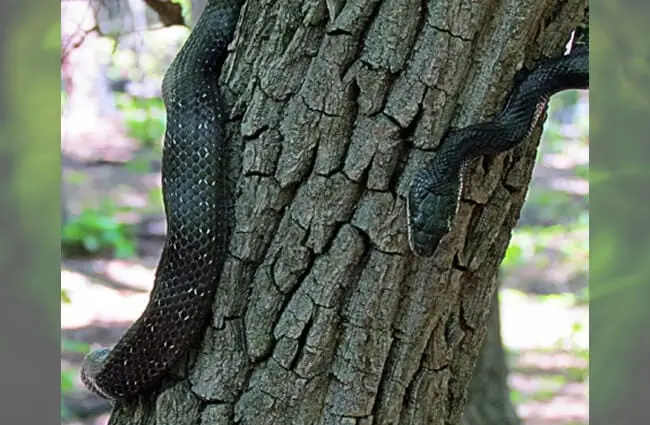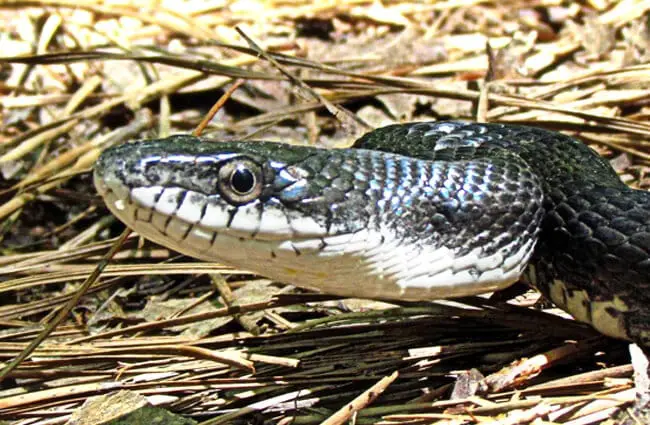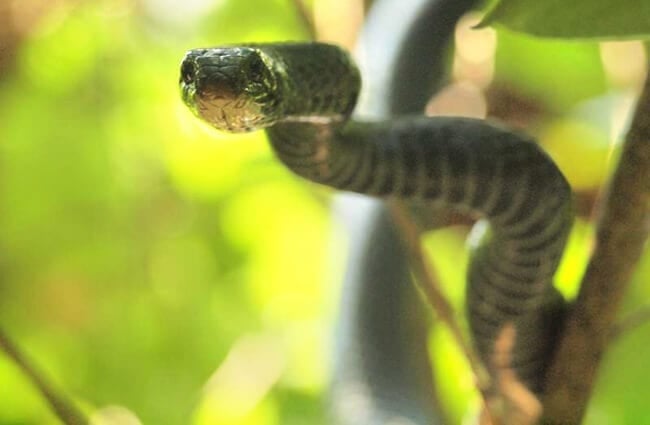The Swift Shadow: A Deep Dive into the World of the Black Racer
The Black Racer, Coluber constrictor, is a fascinating and often misunderstood snake species native to North America. Known for its incredible speed and sleek, dark coloration, this nonvenomous constrictor plays a vital role in maintaining ecological balance. This comprehensive guide explores every facet of the Black Racer’s life, from its natural habitat and hunting strategies to its evolutionary history and interactions with humans.

Habitat and Distribution
Black Racers are remarkably adaptable, inhabiting a broad range of ecosystems across the United States, southern Canada, and northern Mexico. They are commonly found in open woodlands, grasslands, agricultural fields, and even suburban gardens. Their preference for open areas allows them to effectively hunt and bask in the sun. This snake is particularly prevalent in the eastern and central United States, but its range extends westward, though with decreasing frequency. Black Racers thrive in areas with a mix of sunny patches and dense vegetation, providing both thermal regulation and cover from predators.
Physical Characteristics
As the name suggests, adult Black Racers are typically a glossy black color, though variations in shade can occur depending on the region and individual. Juveniles, however, are strikingly different. Young Black Racers possess a distinctive pattern of reddish‑brown or gray blotches along their backs, which gradually fades as they mature. These markings provide excellent camouflage among leaf litter and vegetation. The snake’s body is long and slender, averaging between 3 to 5 feet in length, though some individuals can reach even greater sizes. Its smooth scales and streamlined body contribute to its exceptional speed, allowing it to move with remarkable agility across various terrains.

Diet and Hunting Strategies
Black Racers are opportunistic carnivores with a diverse diet. Their primary food sources include rodents, birds, lizards, frogs, and insects. They actively hunt, using their speed and agility to capture prey. Unlike some snakes that lie in ambush, Black Racers pursue their targets, often running them down with impressive bursts of speed. They subdue their prey through constriction, wrapping their bodies around the animal and squeezing until it suffocates. While effective, this constriction is not strong enough to subdue large prey, so they typically target smaller animals.
Evolutionary History
The evolutionary history of the Black Racer, like that of many snake species, is complex and still being investigated. Coluber constrictor belongs to the family Colubridae, a diverse group of snakes found worldwide. Fossil evidence suggests that the ancestors of modern Black Racers emerged during the late Miocene epoch, approximately 5 to 10 million years ago. Over time, this species adapted to a wide range of habitats, leading to regional variations in coloration and size. Its adaptability and widespread distribution are testaments to its evolutionary success. Phylogenetic studies have revealed close relationships between Black Racers and other North American Coluber species, suggesting a common ancestry and a relatively recent diversification.

Reproduction and Life Cycle
Black Racers are typically ovoviviparous, giving birth to live young. Mating usually occurs in the spring, with females giving birth to a litter of between 5 and 12 offspring in a concealed location, such as a rotting log, abandoned burrow, or beneath leaf litter. The gestation period is about 90 to 120 days, depending on temperature. Upon birth, the young snakes are independent and begin foraging on their own. They grow rapidly during their first year, shedding their skin several times as they increase in size. Black Racers can live for up to 10 years in captivity, but in the wild they typically live 4 to 8 years, with their lifespan often limited by predation, disease, and habitat loss.
Ecological Role and Interactions with Other Animals
Black Racers play a crucial role in maintaining ecosystem health. As predators of rodents and other small animals, they help control populations and prevent overgrazing. They also serve as a food source for larger predators, such as hawks, owls, and foxes. This snake’s presence indicates a healthy and balanced ecosystem. Black Racers often coexist with other snake species, occasionally sharing the same habitats and resources. While they are generally not aggressive towards other snakes, territorial disputes can occur, particularly during mating season. They are also known to occasionally prey on other snakes, although this is relatively uncommon.

Black Racers and Human Interactions
While Black Racers are nonvenomous, their quick movements and dark coloration can sometimes startle people. They are often mistaken for venomous snakes, leading to unnecessary fear and persecution. It is important to remember that Black Racers are harmless to humans and play a beneficial role in controlling pest populations. In agricultural areas, they can help control rodent populations and protect crops from damage. However, they may occasionally enter gardens or yards in search of food, leading to encounters with humans and pets. When encountering a Black Racer, it is best to observe it from a safe distance and allow it to move on its way. Do not attempt to handle or harass the snake, as this can cause it stress and potentially lead to a defensive bite, which, although nonvenomous, can still be painful.
Conservation Status and Threats
Currently, the Black Racer is listed as Least Concern on the IUCN Red List. However, local populations may be facing threats due to habitat loss, fragmentation, and road mortality. Conversion of natural habitats to agricultural land, urban development, and deforestation are major drivers of population decline. Roads pose a significant risk to Black Racers, as they often cross roads in search of food or mates. Conservation efforts should focus on protecting and restoring natural habitats, reducing road mortality, and educating the public about the importance of snakes in ecosystems.

Fascinating Facts About Black Racers
- Black Racers can reach speeds of up to 30 miles per hour when fleeing or hunting.
- They can climb low shrubs and sometimes small trees in search of prey or basking spots.
- They are known to shed their skin in one complete piece, revealing a fresh, vibrant pattern.
- Black Racers are tolerant of a wide range of temperatures, allowing them to thrive in diverse climates.
- They have a distinctive forked tongue that is used to detect scents in the air.
The Black Racer is a remarkable creature, embodying both elegance and resilience. By understanding its life history, ecological role, and the threats it faces, we can work to ensure its continued survival for generations to come. Appreciating these swift shadows is crucial for maintaining the health and biodiversity of our ecosystems.

![Red Angus Closeup of a beautiful Red Angus cowPhoto by: U.S. Department of Agriculture [pubic domain]https://creativecommons.org/licenses/by/2.0/](https://animals.net/wp-content/uploads/2020/03/Red-Angus-4-238x178.jpg)




![Red Angus Closeup of a beautiful Red Angus cowPhoto by: U.S. Department of Agriculture [pubic domain]https://creativecommons.org/licenses/by/2.0/](https://animals.net/wp-content/uploads/2020/03/Red-Angus-4-100x75.jpg)

